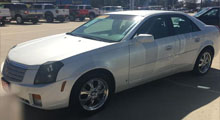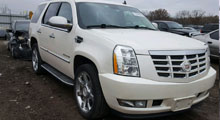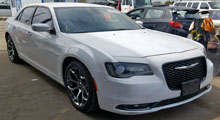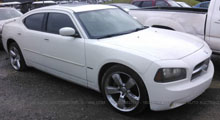5 Signs It's Time For A New Car
Most people avoid buying a new car like the plague. Although purchasing a new car is an exciting process, it’s also a very tedious one, and one that’s riddled with more questions than answers. Before you commit to purchasing something that should last you the next couple of years, decades even, you have to ask yourself several very important questions. Can you afford to buy a new car? What sort of car do you need? Most importantly though, you need to answer one glaring question more important than any other: “Do I actually need a new car?”
For a lot of people, the answer is no, but a lot of folks end up driving an old car just because they think it’s more convenient or they don’t want to go through the trouble of buying a new car. In reality, if you’re stuck with an old car and are just avoiding the inevitable, you’re probably spending more money in the long run compared to buying something newer outright. Here are 5 signs it’s time you sell your old car and upgrade to something newer.
1. Maintenance
This one seems obvious, but you’d be amazed at how often people would much rather pay for repairs than buy a newer car. Somehow, paying several hundred dollars for a repair seems much more reasonable than shelling out a couple of thousand at once, even if you need to repair your old car several times a year. Sometimes people don’t see the bigger picture and are too focused on short-term goals.
Yes, it’s cheaper to pay for a single repair than buy a newer car, but what happens if you need to carry out several repairs a year? Multiply that by a couple of years, and you suddenly realize that upkeep for an older car is much less affordable than buying something newer which will require less maintenance.
What’s more, you have to factor in the cost of your old car when deciding whether carrying out repairs and maintenance is even worth it. If you need to shell out several thousand dollars for repairs on a car that’s worth as much as the repairs will cost, then you’re essentially throwing that money down the drain. Once you repair the car, its price won’t suddenly jump up and double. It’s still worth as much as it was before. It’s much better to sell it and let someone else deal with it, or part it out for cash.
2. Lifestyle Changes
Do you currently own a sporty two-door coupe but have a large four-member family you have to haul around? It’s time to sell it and get something more practical that, hopefully, has four doors. If you own a large sedan but your family is quickly expanding, maybe it’s time for a minivan or an SUV. It’s things like these you have to consider before committing to a purchase, otherwise, you’re just wasting your money if you have to sell the car and swap it out for something else just a few years down the line. Have a well-thought-out plan and consider what you’re going to be doing with the car most of the time. Is it a daily commuter or a family hauler? Is it a weekend toy or something you want to take to the track?
3. Fuel Economy
Again, this is something you have to calculate and work out for yourself. Older cars tend to be less economical and fuel-efficient, costing you more money in the long-run. This all depends on your particular situation, so it’s you who has to crunch the numbers and work out whether buying a newer, more economical car is worth it. In our experience, the more miles you do a year, the more it makes sense to buy something newer and cleaner. If the cost of upgrading from your current car to the newer car is offset by the fuel savings the newer car brings in just a year or two, then it’s definitely worth upgrading, because, in addition to being more efficient, you’ll be enjoying all the other perks that come with owning a new car.
4. Technology
Just how old is your current car, exactly? If it’s so old that you can’t even connect your phone via Bluetooth or an auxiliary cable, then it’s probably time to upgrade. Newer cars come with a lot of technology, and I’m not just talking about heated seats and A/C either. The perks of having modern infotainment systems which incorporate your radio and navigation all in one unit far outweigh the cost of buying a newer car.
You don’t have to buy the newest car straight off the production floor, but a car which offers Bluetooth connectivity or even USB ports for charging/connection is a really nice thing to have. They’re not essentials, but they make life a lot easier, especially if you commute a lot.
5. Safety features
Car safety has come a long way in the last few decades. Even cars from the late 2000s are several times safer than cars built in the 1980s and even the 1990s. Most modern cars have at least two airbags, but newer vehicles come with four, six, eight, or sometimes as much as twelve airbags. As great as airbags are, they’re passive safety systems, meaning they only deploy and activate in the case of a collision.
If you want something extremely safe and modern, you need a car with active safety systems. Lane keep assist, active braking and monitoring, these are all features developed in the last decade or so. If you want something that will protect you and your family at all times, buy a car with both passive and active safety systems.
Conclusion
Buying a car is extremely challenging. Not only does it have to meet your budget expectations, but it also has to be practical, economical, safe and dependable, for both you and your entire family. Hopefully, with this information in mind, you can find something that works great for you and doesn’t break the bank in the process.





